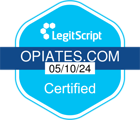There are a number of Oxycodone addiction facts that should be part of any awareness disclosures. Having a firm knowledge and understanding of the nature of drugs such as Oxycodone is key to avoiding serious problems.
Oxycodone is a very strong narcotic pain reliever similar to morphine, codeine and hydrocodone. It’s used to treat moderate to severe, long-term pain. Oxycodone is available in immediate or extended release tablets and can be administered orally, rectally or by injection. It’s sold as OxyContin, Percocet, Percodan, Endocet, Roxicet, OxyIR and Tylox.
Oxycodone is one of the most effective pain relievers and works by attaching to opioid receptors in the spinal cord and brain. Patients may become physically dependent with regular use. The bigger issue is addiction, characterized by physical and psychological dependence. This can develop quickly, especially among Oxycodone abusers. It’s widely known that Oxycodone products, including OxyContin, are among the most abused substances out there.
Oxycodone Addiction Facts to be Considered
- Oxycodone addiction can develop quickly and is characterized by a person’s inability to stop using the drug.
- Most people who become addicted to prescription painkillers don’t do it on purpose. As an addiction progresses, people will inevitably build a tolerance and need more of the drug in order to achieve the same level of pain relief.
- Serious problems linked to Oxycodone addiction include: low blood pressure, heart problems or failure, respiratory problems or failure, kidney failure, nervous system problems, damage to gastrointestinal system and brain function and seizures, coma and death.
- When abused, Oxycodone can provide a sense of euphoria, relaxation and sedation. Some people become desperate for this kind of release and escalate use to the point that opiate addiction is inevitable.
- Many people who become addicted to Oxycodone move on to heroin because it’s cheaper and more easily accessible.
- Oxycodone is widely available on the black market and provides the fuel for crimes such as theft, armed robbery and prescription fraud.
- Abuse of and addiction to painkillers such as Oxycodone has become an epidemic in the United States.
- Oxycodone addiction results in opiate withdrawal, which can include physical and psychological symptoms such as strong cravings, muscle and bone pain, cramps, severe agitation, tremors, depression and aggression.
- Oxycodone addiction is tough to reverse without professional help. Without an organized opiate detox program, the relapse rate is very high.
- Oxycodone addiction treatment should address both types of dependence. The physical dependency should be addressed first. Once detoxed, patients can begin to work on the psychological aspect.
- Young people are increasingly using Oxycodone in an abusive manner. They may begin by experimenting with prescription meds in their parents’ or other family members’ medicine cabinets.
- Recovery from oxycodone addiction is possible. Treatment can include detox, rehab, opiate replacement therapy or rapid detox.
The signs and symptoms of Oxycodone dependence may include some or all of the following:
- A need for an increased amount to relieve pain or create euphoria
- Feeling physical or mental withdrawal after stopping or decreasing use
- Unsuccessful attempts to diminish, stop or control use
- Great deal of time and effort spent trying to obtain more Oxycodone, use it or recover from its effects
Learn the Oxycodone addiction facts so you can help yourself or a loved one overcome this dependence.










